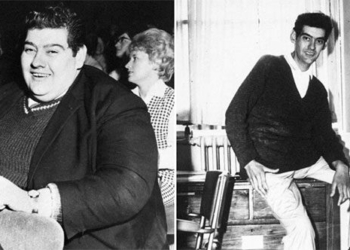“Small but Mighty,” this unique bank has weathered a historic crisis and maintained operations for over 100 years.
Perhaps James A. Sammons is the executive of the smallest bank in the United States – Kentland Federal Savings and Loan (S&L). With total assets valued at $3 million, this bank is the “humblest” member of the Independent Community Bankers of America (ICBA), an organization dedicated to small banks in the U.S. This has been confirmed by the Federal Deposit Insurance Corporation (FDIC).
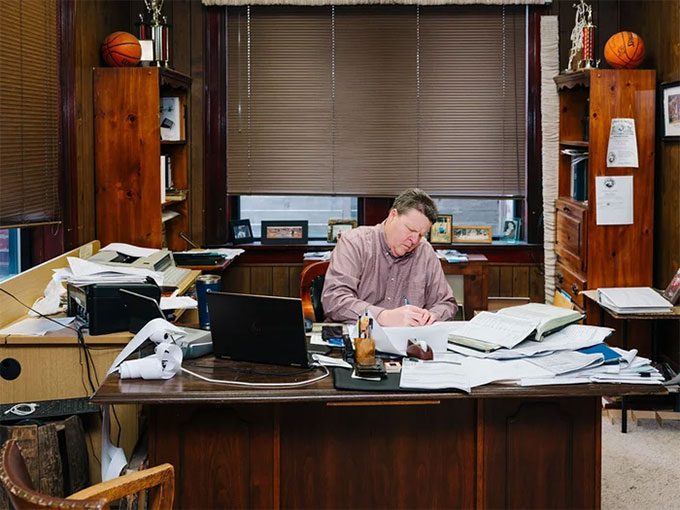
Sammons is usually at the bank by 7:30 AM each day
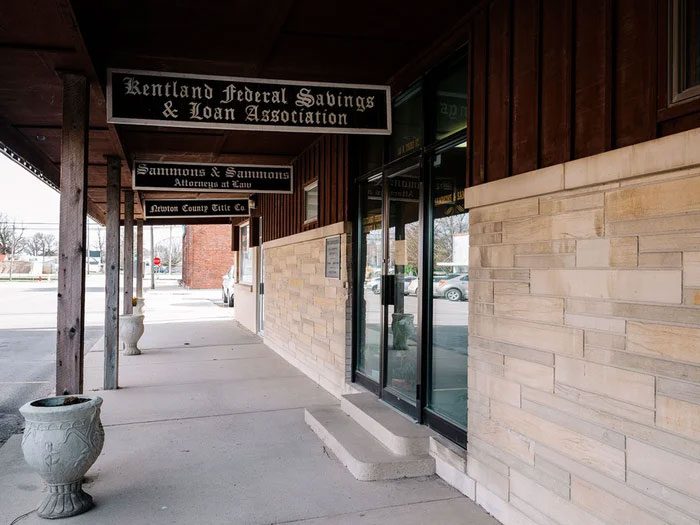
The bank’s facade, next to a law office and a family business
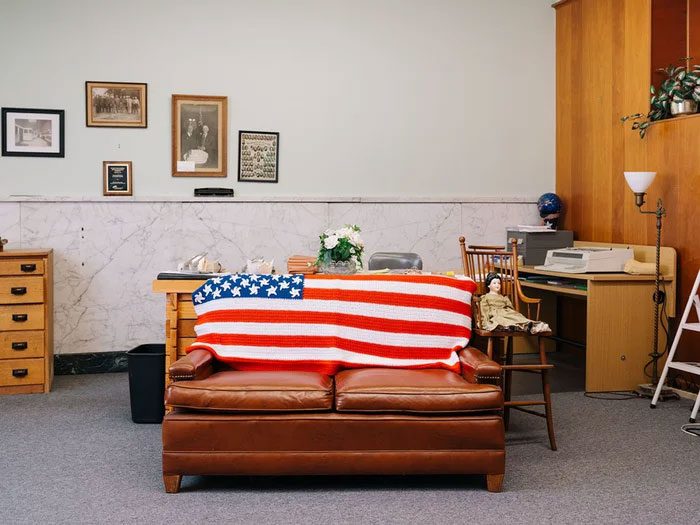
The bank’s customer reception area
In addition to its unusual small size, Kentland Federal Savings and Loan has other distinctive features. This bank is located solely in the town of Kentland in Indiana, which has a total population of only 1,641 people. Furthermore, they do not have an ATM or any official website.
Essentially, there are two things you can do as a customer: get a home mortgage or open a savings account. And regardless of which service you use, all procedures will be carried out on paper in the most literal sense.
As the fourth generation of his family to run the bank and the only official employee, Sammons lacks the patience to use computers instead of manual methods, even though he knows they would be very useful.
The bank was established in 1920 by Sammons’ great-grandfather, and its address has remained unchanged to this day. Like previous generations, Sammons once worked in the city government system.
Relationships and trust are key for the bank to survive for over 100 years: “We are the only organization that did not close during the stock market crash of the late 1920s. Here, people feel reassured because they know their money is safe.”
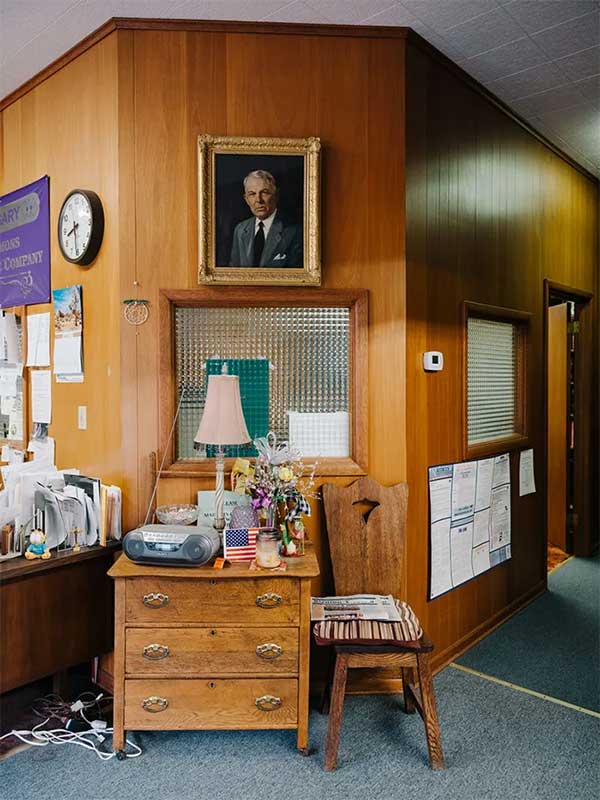
Portrait of Hume Sammons, the bank’s founder, hangs near the entrance

From left to right: Hume Sammons, George Sammons, and James E. Sammons, the first three generations of bank leadership
Similar small banks like S&L have strived to maintain independence after decades of increasing consolidation in the industry. According to financial journalist Roger Lowenstein, regulations have been put in place to protect the interests of small banks. For example, in 1930, banks were not allowed to open additional branches or operate federally.
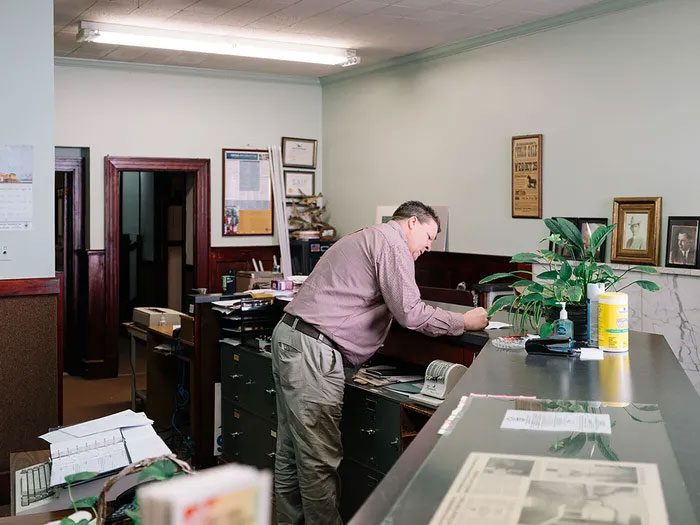
Mr. Sammons writing checks that need to be encoded
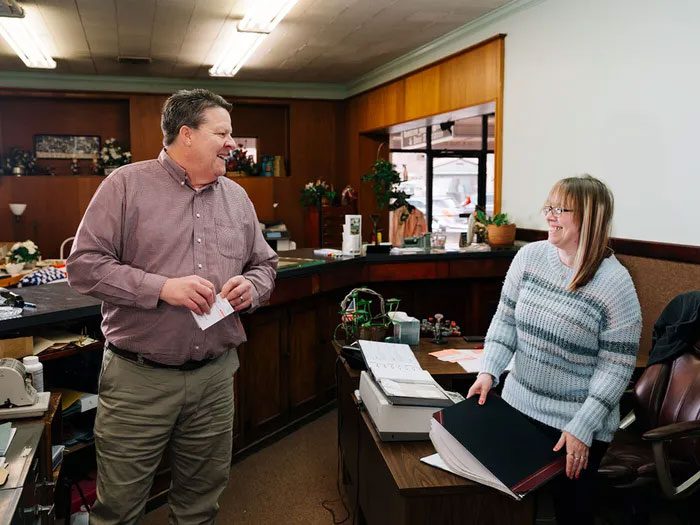
Sammons greeting part-time employee Michelle Alexander as she arrives for work
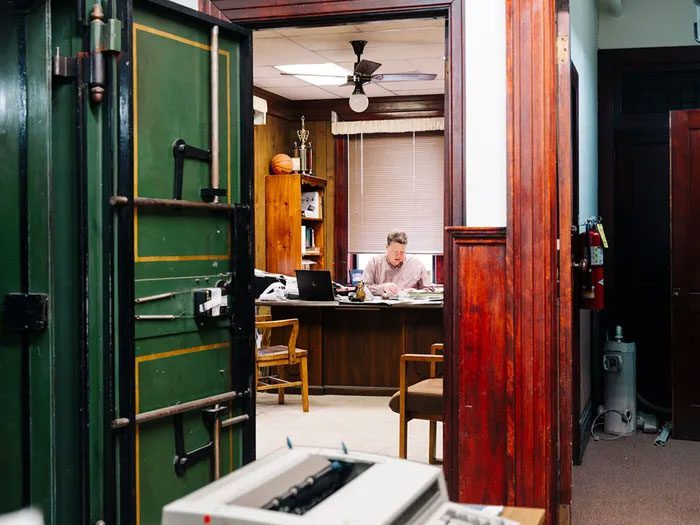
Sammons’ office at the bank
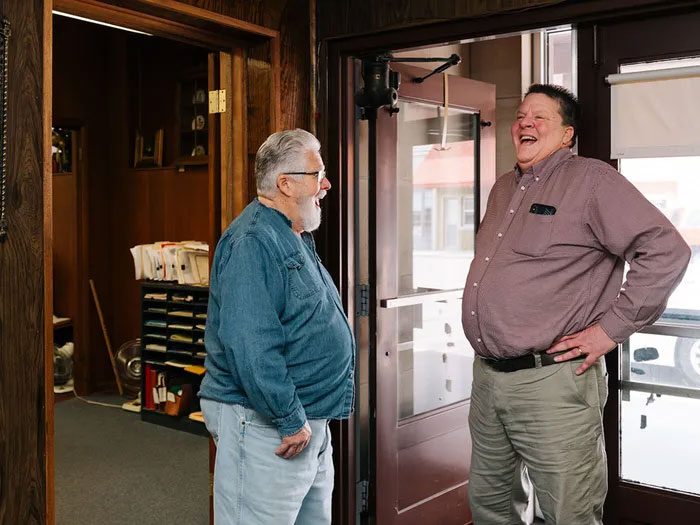
Sammons chatting with Mr. Ben Combs, a friend and loyal customer of the bank
After the Dodd-Frank Act was passed in 2010, many debates arose. People questioned whether the legal burdens were weighing down small banks, forcing them to merge or sell out. In reality, both financial crises and regulatory changes have not prevented the mergers and acquisitions of banks.
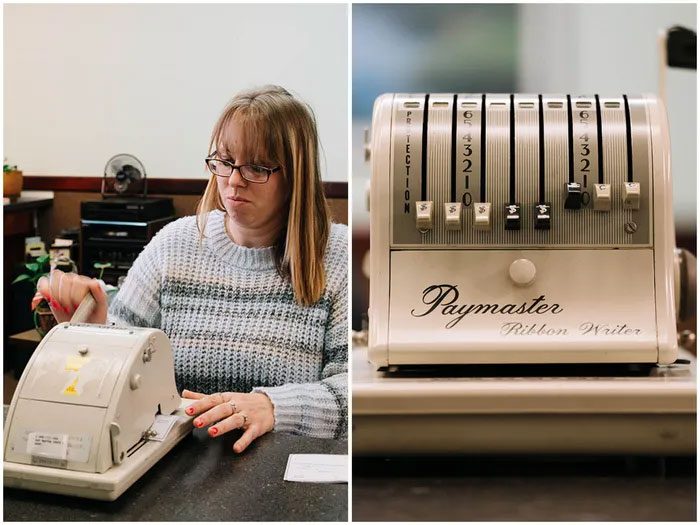
Almost all operations at the bank are performed manually
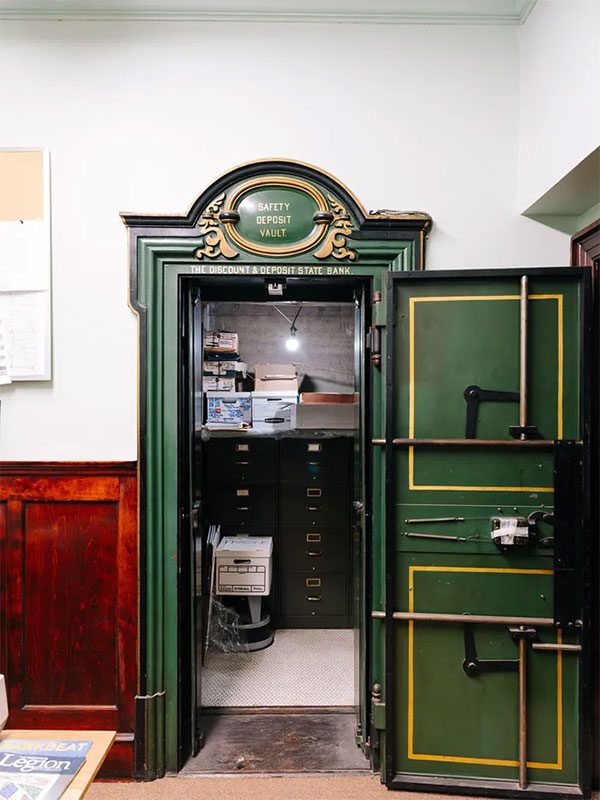
The storage room at the bank
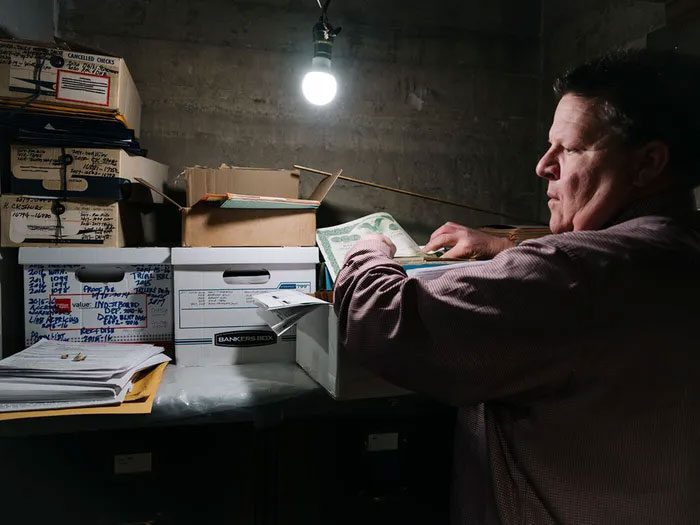
Sammons searching for documents in storage
Reluctantly, Sammons must accept the reality that the bank’s operations may cease after his retirement. He currently has four sons, but none of them have an interest in the family business. Therefore, whether regulatory agencies apply pressure or he decides to step away, the bank will ultimately be sold.
Another reason that could force the bank to close is its slim profit margins. According to Sammons, while his bank attracts local customers with its savings and mortgage rates, beyond that, the bank does not generate any additional revenue. It may sound unrealistic, but S&L has never charged fees to customers: no ATM fees, no transfer fees, and no transaction fees of any kind.
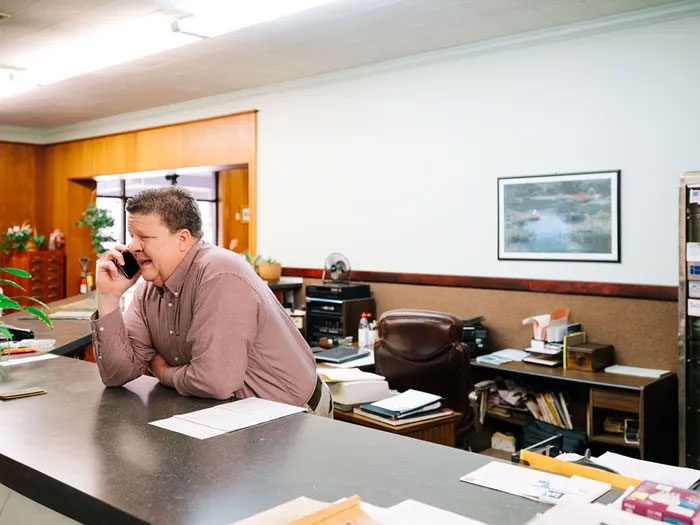
Kentland Federal Savings and Loan does not charge any service fees to customers
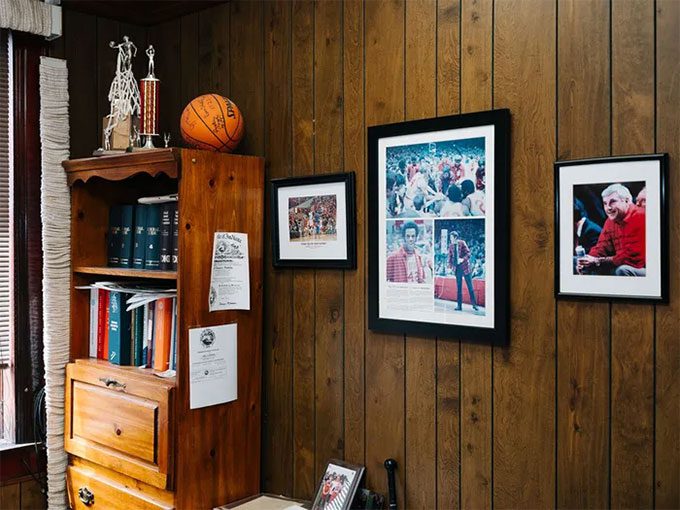
From the trophies and photos hanging on the wall, it’s clear that Sammons has a special passion for basketball
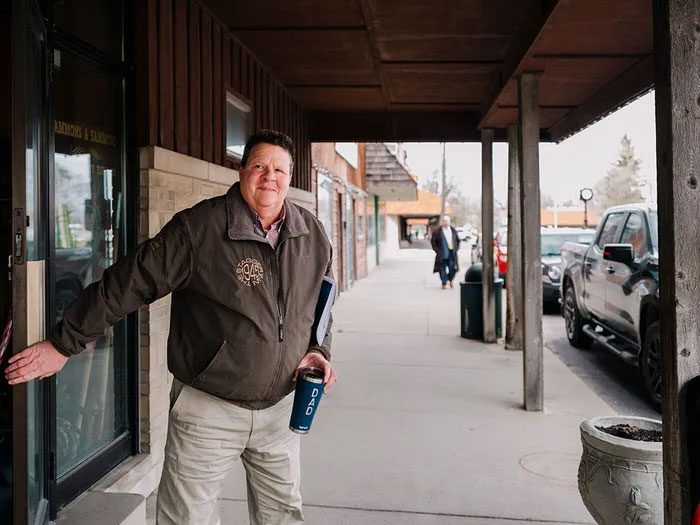
Sammons finishes work at 3 PM every day
So what does the U.S. lose when its small banks are struggling to survive?
According to Lowenstein, the bias that “small banks are less secure” is a consequence of the Dodd-Frank Act. Indeed, small banks have had to witness a decline in deposit flows since Silicon Valley Bank, one of the largest and most reputable banks in the U.S., declared bankruptcy last month; however, that does not mean that the banking sector in this country will become monopolized. Simply put, they have a long-standing legacy of local banking.
Journalist Lowenstein notes that the issue with banks isn’t about size, but depends on their position on the risk and safety scale. Many argue that occasionally a bank’s failure can be beneficial, but that does not apply to Sammons’ bank.
At Kentland Federal Savings and Loan, customer deposits are absolutely guaranteed, so they have no reason to worry about the safety of their savings. Rather than focusing on the economy, Sammons believes that his bank has a competitive advantage socially. Anyone who calls the bank is directly answered by him or the part-time staff without going through any waiting process.
Strangely enough, as the operator of a bank, Sammons doesn’t seem too concerned about money. His income relies on a small number of regular customers, but that number is gradually decreasing. As tough times begin, he cannot sustain the bank without finding ways to grow, but that is the price he accepts to pay.









































